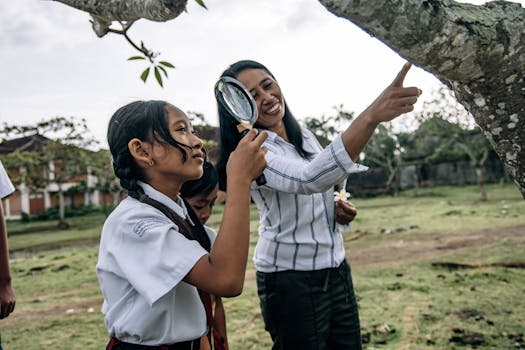Outdoor Education: Nature as the Classroom
The traditional classroom setting has long been the standard for education, providing students with a structured environment to learn and grow academically. However, in recent years, there has been a growing emphasis on the benefits of outdoor education, with nature as the classroom. This alternative form of education not only offers a change of scenery, but also allows for a more hands-on and experiential learning experience. In this article, we will explore the concept of outdoor education and how nature can serve as a valuable teacher in the educational journey of students.
The Power of Outdoor Education
Outdoor education involves taking students out of the confines of the traditional classroom and into the natural environment. This type of education takes various forms, such as field trips, camping trips, and outdoor activities, all with the goal of enhancing academic learning through practical application in nature.
The benefits of such an approach are vast, with numerous studies showing positive outcomes for students who participate in outdoor education programs. One of the most significant advantages is the improvement of critical thinking skills. In nature, students are faced with real-life situations that require them to think on their feet and problem-solve, leading to the development of crucial decision-making abilities.
Additionally, being exposed to new environments and experiences in nature can have a positive impact on students’ mental health and well-being. Studies have shown that spending time in nature can reduce stress, anxiety, and depression, which in turn can lead to improved academic performance and overall satisfaction with school.
Learning through Experience
One of the main principles of outdoor education is learning through experience. In a traditional classroom, students are often limited to learning from textbooks and lectures. However, in nature, they have the opportunity to see, touch, and experience the concepts they are learning about, making the lessons more tangible and memorable.
For example, a biology lesson about plants can come to life when students are taken to a botanical garden or forest and can see the different types of vegetation in person. This hands-on approach not only makes learning more engaging but also encourages students to ask questions, explore, and discover new things on their own.
Nature as a Teacher
Nature itself can also serve as a valuable teacher in the outdoor education approach. From learning about different types of ecosystems and wildlife to understanding the importance of sustainability and conservation, nature provides a vast array of lessons that cannot be taught within the four walls of a classroom.
Outdoor education also allows for interdisciplinary learning, where students can apply concepts and skills from various subjects to real-life situations in nature. For instance, a group of students studying history can visit a historical site in nature and combine their knowledge of history, geography, and biology to gain a more comprehensive understanding of the topic.
Conclusion
In today’s technology-driven world, outdoor education offers a refreshing change for students and educators alike. Not only does it provide a break from the typical routine, but it also offers a unique and effective way of learning. By taking students out of the classroom and into the great outdoors, we can open their minds to new perspectives, encourage curiosity and creativity, and create a more well-rounded and fulfilling educational experience. So, let’s embrace nature as the classroom and reap the many benefits of outdoor education.











